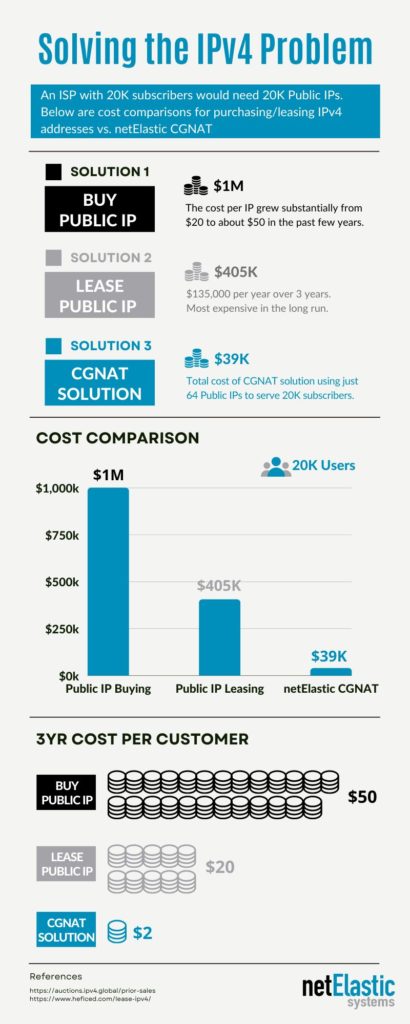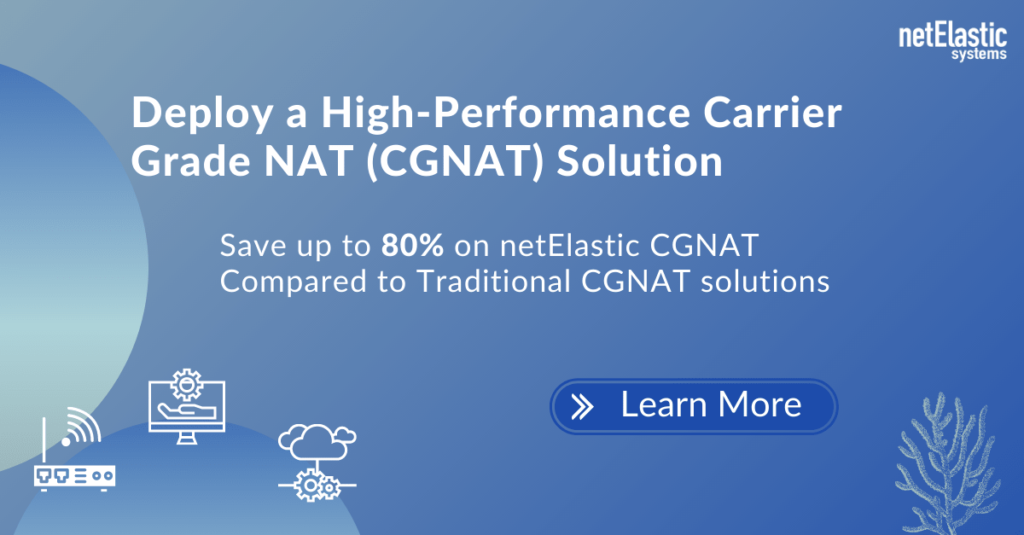The cost of buying or leasing IPv4 addresses continues to increase. Why?
It’s a simple matter of supply and demand. The supply of IPv4 addresses is capped since no new IPv4 addresses are being created. So, supply stays the same, regardless of demand.
Demand for IPv4 addresses is anything but stagnant, as broadband providers continually sign up new subscribers and subscribers add more internet-connected devices. For example, global fiber broadband subscribers crossed the one billion mark last year. And we all know what happens when demand increases while supply doesn’t…prices go up!
What may be surprising is how dramatic those price increases have recently been. According to Amazon, the cost to acquire a single public IPv4 address has risen more than 300% over the past 5 years.

Network Address Translation
One solution to the high cost of purchasing or leasing IP addresses is to share the remaining IPv4 addresses among larger numbers of customers. To accomplish this, Network Address Translation (NAT) enables a single router to act as an agent between the internet and a local private network so that one public IP address can represent hundreds or even thousands of devices within the private network.
By sharing a public IP address among many private IP addresses, NAT limits the number of public IP addresses an organization uses, conserving its IPv4 addresses. As a result, NAT has become a very valuable technology to extend the use of IPv4 addresses and successfully transition to IPv6.
Carrier Grade Network Address Translation (CGNAT) is a large-scale NAT that translates private IPv4 addresses into public IPv4 addresses. CGNAT employs Network Address and Port Translation methods to aggregate multiple private IPv4 addresses into fewer public IPv4 addresses.
CGNAT Solutions
Traditional CGNAT solutions run on proprietary hardware and were developed for large carriers with large budgets. However, many smaller broadband providers, and those located in emerging markets can’t afford the high price tag associated with most CGNAT solutions.
For traditional CGNAT solutions, studies have shown that CapEx costs are typically 90% of the overall costs, and hardware comprises over 70% of the overall costs. To reduce the cost of CGNAT solutions, broadband providers need to look closely at the hardware costs. With hardware accounting for such a large percentage of the overall costs, lowering the costs of CGNAT hardware will significantly impact the total cost of ownership (TCO).
netElastic CGNAT
Unlike legacy CGNAT solutions, netElastic CGNAT software runs on x86-based servers. This makes netElastic CGNAT a cost-effective alternative to higher priced solutions and perfectly suited for regional and rural broadband providers.
netElastic’s software-based CGNAT is built on netElastic’s high-performance virtual router technology. This very scalable software architecture delivers high translation performance while supporting a broad range of additional routing capabilities.
netElastic CGNAT also has built-in support for application gateways to ensure applications run continuously and transparently with CGNAT. Using DPDK and advanced packet processing, netElastic CGNAT can achieve near line-rate throughput on 10G, 25G, 40G, and 100G interfaces. It’s also highly scalable (scales by cores) and can deliver 5 Gbps to over 360 Gbps per server. CGNAT supports up to 12 million NAT sessions, enough for over 60,000 subscribers.
A Pricing Example
The cost of purchasing or leasing IPv4 addresses can add up very quickly. The infographic below illustrates the costs for:
- Buying IPv4 addresses
- Leasing IPv4 addresses
- Purchasing a netElastic CGNAT solution

netElastic CGNAT provides an easy way to conserve IPv4 addresses while ensuring a smooth transition to IPv6. And netElastic’s software-based CGNAT offers the lowest Total Cost of Ownership (TCO) in the industry.
To learn more, please read the white paper Can Implementing CGNAT be Easy and Affordable?


